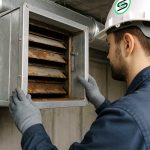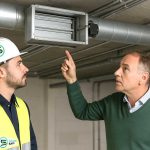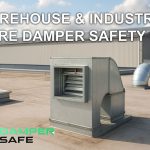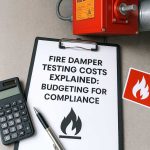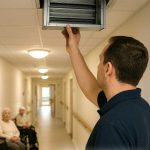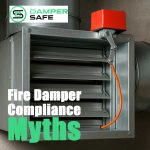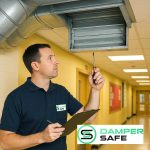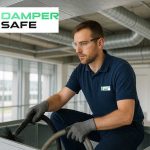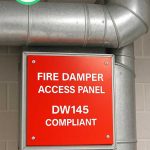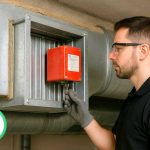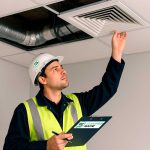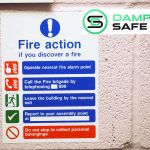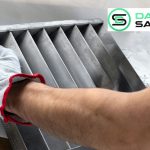Top 5 Fire Damper Installation Mistakes and How to Avoid Them
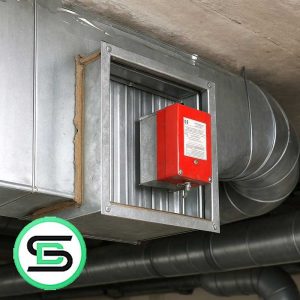
Fire dampers save lives — but only if they’re installed correctly. At Damper Safe Ltd, we regularly encounter faulty installations that compromise both safety and compliance.
In this guide, we reveal the most common fire damper installation mistakes and what you can do to avoid them.
Whether you’re managing a refurbishment or reviewing compliance, addressing these pitfalls is essential for staying within UK fire safety regulations.
1. No Access for Testing or Maintenance
The Mistake: Dampers installed behind fixed walls, above hard ceilings or in duct runs without removable access panels.
Why It’s a Problem: You can’t inspect or test what you can’t reach. This not only violates DW145 and BS 9999, but it makes ongoing compliance impossible.
How to Avoid It:
- Install access doors adjacent to every fire damper
- Ensure they are labelled and easy to reach
- Specify this requirement at the design stage
Learn more about best practice installation from BESA’s DW145 fire damper guide: DW145 – Fire and Smoke Dampers
2. Wrong Orientation of Fire Dampers
The Mistake: Installing a curtain-type fire damper in the wrong orientation — typically horizontally when it’s designed for vertical use.
Why It’s a Problem: It may not close properly in the event of a fire, risking smoke and flame spreading through the ductwork.
How to Avoid It:
- Always follow the manufacturer’s installation instructions
- Use the correct type (curtain vs. intumescent) for the layout
- Ask for a second check by a qualified compliance engineer
3. Missing or Inadequate Fire Stopping
The Mistake: Failing to seal the penetration where ductwork passes through a fire-rated wall or floor, or using the wrong materials.
Why It’s a Problem: Gaps around the damper housing allow fire and smoke to bypass the damper, defeating its entire purpose.
How to Avoid It:
- Use tested fire-rated sealing systems
- Ensure sealant and collars meet UK fire resistance standards
- Ask your contractor to reference BS 476-20 or EN 1366-2
Learn more about our fire stopping audit service
4. Not Labeling or Registering Damper Locations
The Mistake: No asset register. No visible labelling on-site.
Why It’s a Problem: Without a record of where each fire damper is located, you’re left guessing — especially in multi-floor or complex buildings. This leads to incomplete inspections.
How to Avoid It:
- Keep a central register of all damper positions
- Use tamper-proof labels or digital QR tagging
- Update the record every time work is carried out
5. Incorrect Fixings or Support
The Mistake: Fire dampers not properly secured to the ductwork or structure, or using non-fire-rated fixings.
Why It’s a Problem: In a fire, the damper may shift or fail to close, risking uncontrolled spread.
How to Avoid It:
- Use brackets and supports as specified in DW145
- Never rely on duct tape or non-rated materials
- Ensure all installation is signed off by a qualified technician
Final Advice: Work With a Competent Installer
Many of the common fire damper installation mistakes we see could be avoided by using a qualified contractor who understands DW145 and the UK’s fire safety regulations. At Damper Safe, we don’t just test fire dampers — we inspect installations and correct legacy issues before they become legal or safety risks.
For a free site assessment, contact our expert team.


